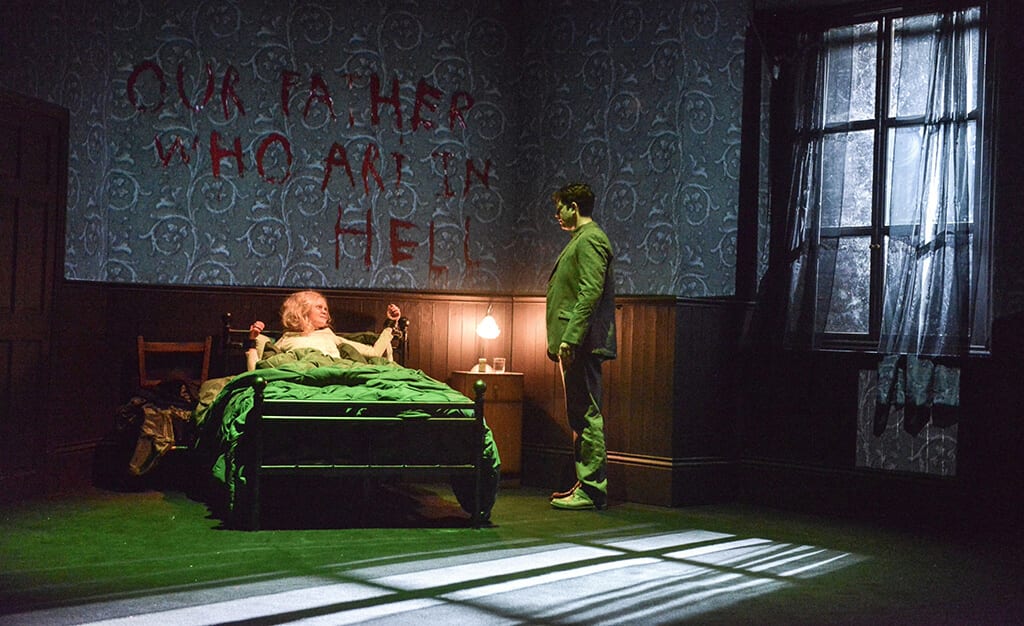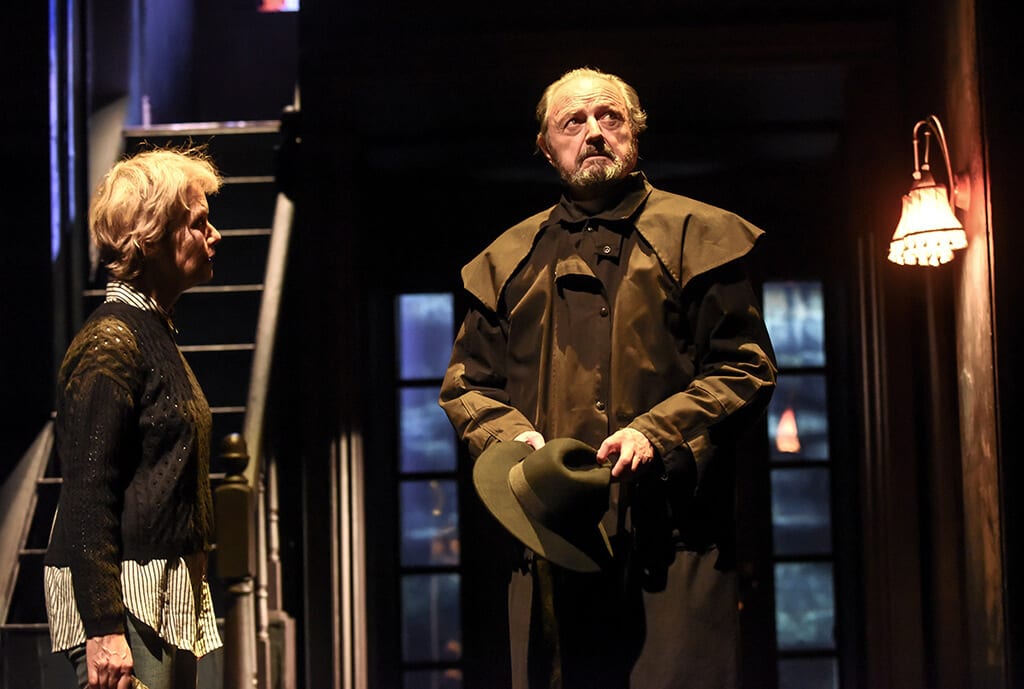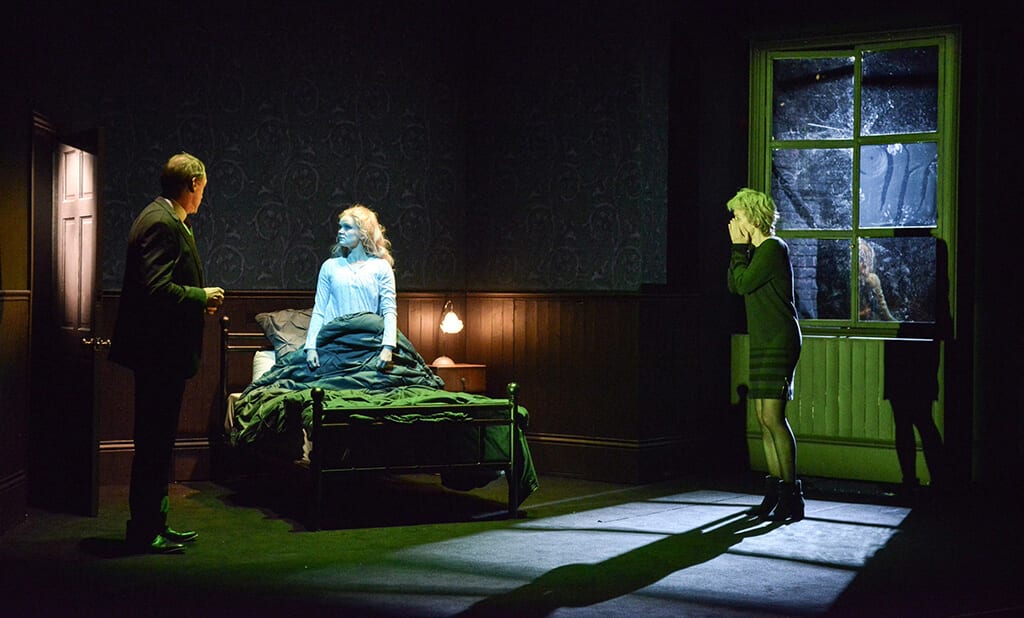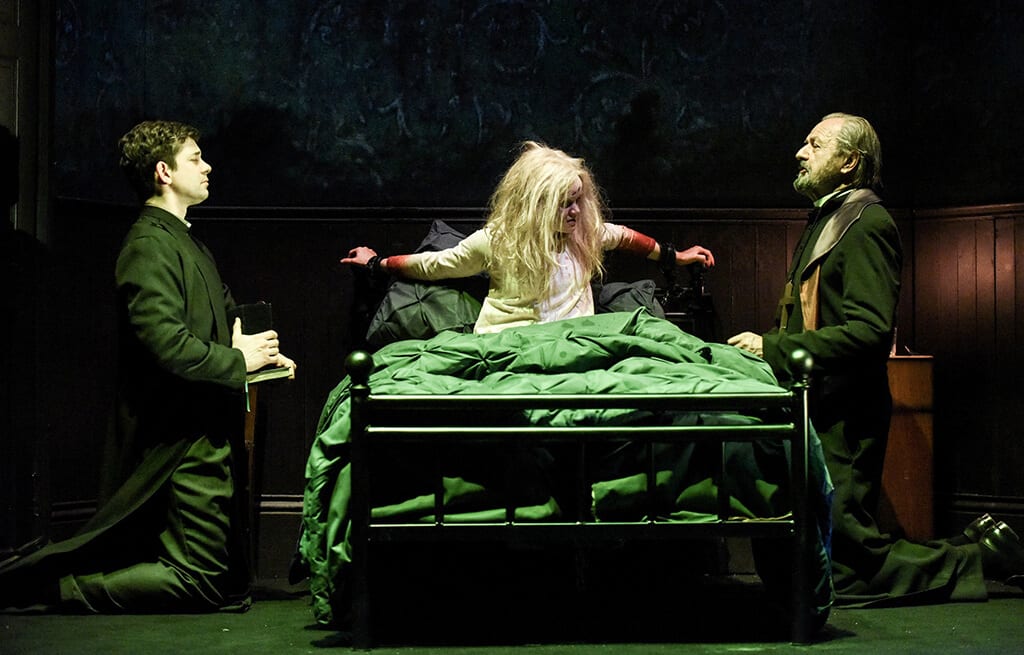The Exorcist is hailed as being the originator of the mainstream horror genre: whether it be the 1971 novel, or the subsequent 1973 film. In John Pielmeier’s UK premiere adaptation, Chris is an actress just about to start filming, and has moved into a rented house with her daughter, Regan. Once Regan finds a Ouija board in an upstairs attic, she becomes demonically possessed, and once the medical profession fails to provide answers for her violence, strong language and irrational behaviour, the church is turned to and the wheels get into motion towards an exorcism.
The real star of this show, directed by Sean Mathias, is its use of the technology it has at its disposal. The wallpaper begun to move as the exorcism started, videos of the dead were projected onto live people and windows broke from a single look from the possessed Regan. These were astonishingly good at most points: the technology required to successfully put this together on stage is undoubtedly what has held it back in the past, and still truly believable head spinning and vomit spraying effects were amiss.
Adam Cork’s compositions were hauntingly unnerving and made the entire play uncomfortable to watch as undistinguished noise rumbled away, reminding us that whilst we were in relative safety, just behind that door was the destructive and pain inflicting devil.
That is not to understate some of the accomplished and strong performances: Clare Louise Connolly was fantastic as Regan, to the point I had to check her age in the interval! She had a superb control over the physicality of her performance, and made stark contrasts from the earlier sweet girl to the manically possessed form she took on as the play progressed.
Tristram Wymark provided some early light hearted relief as Burke, the alcoholic director, and Adam Garcia’s Father Karras was caring yet strong. Jenny Seagrove’s Chris had a very strong second half, but opted for sustained shouting as her emotions heightened, and it would have been good to have seen more of the range she provided in the first half.
Bar a single unnecessary, and messy, scene change, the design was clever and captured the variety of locations. Some of the movement could have been smoother and stage management less visible, but it was not wholly obtrusive on the action.
Whilst not necessarily the outright horror that this was billed as, The Exorcist certainly had a creepy and disturbing atmosphere. The first half had a very strong pace and tempo to it, but this dynamic felt flatter with the lengthy exorcism scenes and a very abrupt ending. There were moments in which I sat, mouth agog, at the behaviour of this evil possessor, and it was these which gave the production its chilling quality.
If only this had been maintained fully and the play had not ended with the iconic ‘Tubular Bells’ which is now so associated with the film, and stuck with Pielmeier’s desire to ‘adapt the novel, not the film.’ The commercial touch of Bill Kenwright glosses over what was otherwise a wholly unnerving and extremely watchable play.




